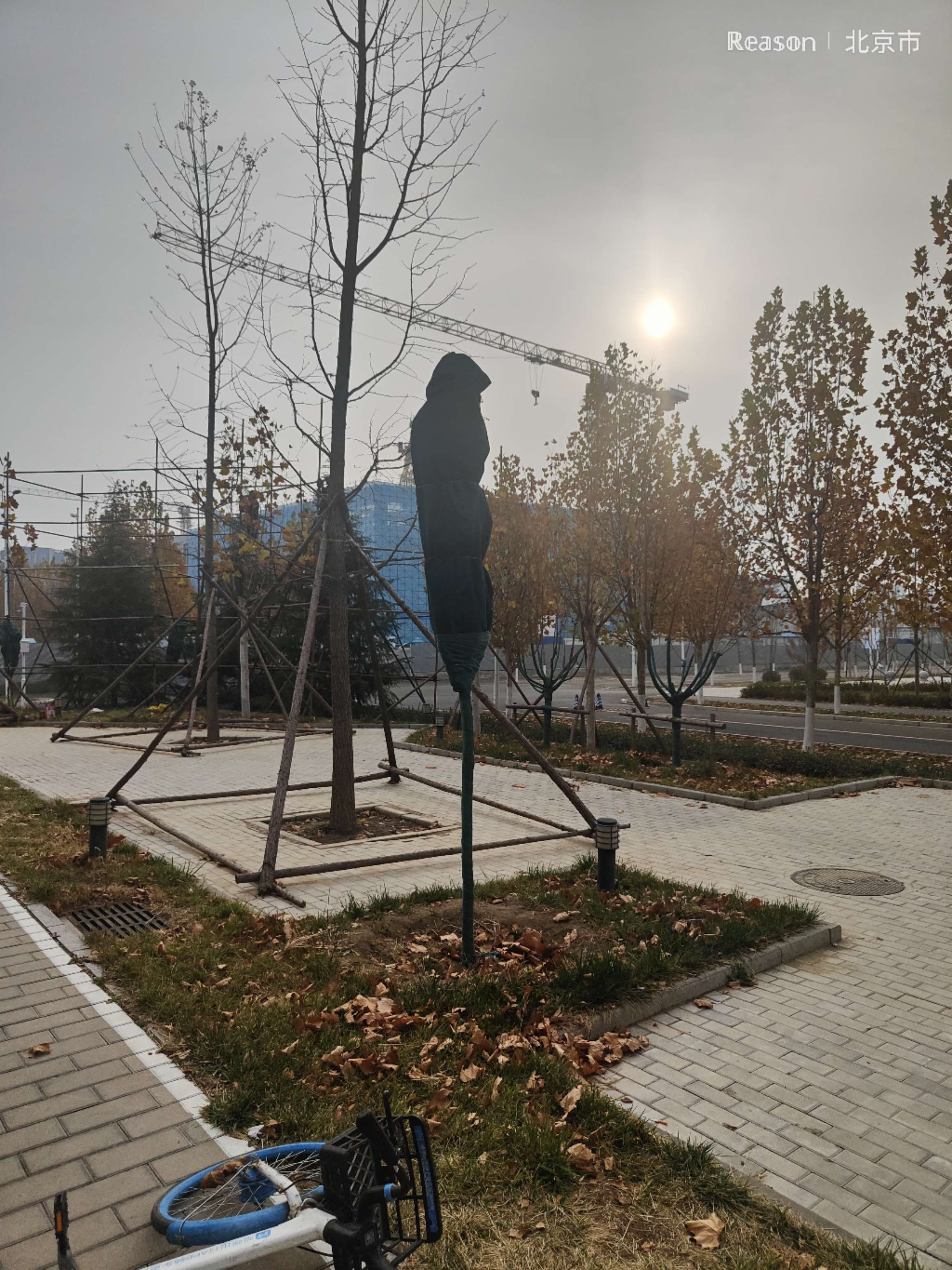本文旨在帮助有实践需求的人快速掌握C++类。
关于类乃至面向对象编程的意义方面的问题,可以参看本站之前的文章。
本文内容非原创,仅仅组合方式为原创。
C++函数
定义函数
一般形式
return_type function_name( parameter_list )
{
body of the function
}拆分介绍
return_type是函数的返回值类型,可以不确切地理解为“因变量”。如果没有返回值,则此处是关键字void。
function_name是函数名称。函数名称和参数列表一起构成了参数签名。
parameter_list是参数列表。参数可不确切地理解为“自变量”。当函数被调用时,您向参数传递一个值,这个值被称为实际参数。参数列表包括函数参数的类型、顺序、数量。参数是可选的,也就是说,函数可能不包含参数。
body of the function是函数主体。
实例
// 函数返回两个数中较大的那个数
int max(int num1, int num2)
{
// 局部变量声明
int result;
if (num1 > num2)
result = num1;
else
result = num2;
return result;
}声明函数
一般形式
return_type function_name( parameter list );实例
针对上面定义的函数 max(),以下是函数声明:
int max(int num1, int num2);在函数声明中,参数的名称并不重要,只有参数的类型是必需的,因此下面也是有效的声明:
int max(int, int);当您在一个源文件中定义函数且在另一个文件中调用函数时,函数声明是必需的。在这种情况下,您应该在调用函数的文件顶部声明函数。
调用函数
实例
#include <iostream>
using namespace std;
// 函数声明
int max(int num1, int num2);
int main ()
{
// 局部变量声明
int a = 100;
int b = 200;
int ret;
// 调用函数来获取最大值
ret = max(a, b);
cout << "Max value is : " << ret << endl;
return 0;
}
// 函数返回两个数中较大的那个数
int max(int num1, int num2)
{
// 局部变量声明
int result;
if (num1 > num2)
result = num1;
else
result = num2;
return result;
}内联函数
诠释
如果一个函数是内联的,那么在编译时,编译器会把该函数的代码副本放置在每个调用该函数的地方。对内联函数进行任何修改,都需要重新编译函数的所有客户端,因为编译器需要重新更换一次所有的代码,否则将会继续使用旧的函数。如果想把一个函数定义为内联函数,则需要在函数名前面放置关键字 inline,在调用函数之前需要对函数进行定义。如果已定义的函数多于一行,编译器会忽略 inline 限定符。在类定义中的定义的函数都是内联函数,即使没有使用 inline 说明符。
参数的默认值
当您定义一个函数,您可以为参数列表中后边的每一个参数指定默认值。当调用函数时,如果实际参数的值留空,则使用这个默认值。
这是通过在函数定义中使用赋值运算符来为参数赋值的。调用函数时,如果未传递参数的值,则会使用默认值,如果指定了值,则会忽略默认值,使用传递的值。
实例
#include <iostream>
using namespace std;
int sum(int a, int b=20)
{
int result;
result = a + b;
return (result);
}
int main ()
{
// 局部变量声明
int a = 100;
int b = 200;
int result;
// 调用函数来添加值
result = sum(a, b);
cout << "Total value is :" << result << endl;
// 再次调用函数
result = sum(a);
cout << "Total value is :" << result << endl;
return 0;
}C++类、对象
类的定义
一般形式
class classname
{
acess_specifiers:
data_members/variables;
member_functions(){}
};拆分介绍
classname是类的名字。
access_specifiers是访问修饰符(private/public/protected)。access_specifiers 确定了类成员的访问属性。在类对象作用域内,public成员在类的外部是可访问的,private成员变量或函数在类的外部是不可访问的,甚至是不可查看的。只有类和友元函数可以访问私有成员。protect成员变量或函数与私有成员十分相似,但有一点不同,protected(受保护)成员在派生类(即子类,后面会讲到)中是可访问的。默认情况下,类的所有成员都是private成员。
data_members/variables是变量。
member_functions是成员函数(方法)。
注意:类定义的结束有分号。
实例
#include <iostream>
using namespace std;
class Box
{
public:
double length; // 长度
double breadth; // 宽度
double height; // 高度
// 成员函数声明
double get(void);
void set( double len, double bre, double hei );
};
// 成员函数定义
double Box::get(void)
{
return length * breadth * height;
}
void Box::set( double len, double bre, double hei)
{
length = len;
breadth = bre;
height = hei;
}
int main( )
{
Box Box1; // 声明 Box1,类型为 Box
Box Box2; // 声明 Box2,类型为 Box
Box Box3; // 声明 Box3,类型为 Box
double volume = 0.0; // 用于存储体积
// box 1 详述
Box1.height = 5.0;
Box1.length = 6.0;
Box1.breadth = 7.0;
// box 2 详述
Box2.height = 10.0;
Box2.length = 12.0;
Box2.breadth = 13.0;
// box 1 的体积
volume = Box1.height * Box1.length * Box1.breadth;
cout << "Box1 的体积:" << volume <<endl;
// box 2 的体积
volume = Box2.height * Box2.length * Box2.breadth;
cout << "Box2 的体积:" << volume <<endl;
// box 3 详述
Box3.set(16.0, 8.0, 12.0);
volume = Box3.get();
cout << "Box3 的体积:" << volume <<endl;
return 0;
}说明:与函数不同的是,成员函数要在定义类中声明,成员函数定义时函数前要加classname::,成员函数的调用、类中变量的存取方法为“对象.内容”。另外,对象需要声明(废话)。
在类的内部定义成员函数
实例
class Box
{
public:
double length; // 长度
double breadth; // 宽度
double height; // 高度
double getVolume(void)
{
return length * breadth * height;
}
};这反而更像函数了,不是吗?
类的构造函数
诠释
类的构造函数是类的一种特殊的成员函数,它会在每次创建类的新对象时执行。构造函数的名称与类的名称是完全相同的,并且不会返回任何类型,也不会返回 void,可用于为某些成员变量设置初始值。
实例
#include <iostream>
using namespace std;
class Line
{
public:
void setLength( double len );
double getLength( void );
Line(); // 这是构造函数
private:
double length;
};
// 成员函数定义,包括构造函数
Line::Line(void)
{
cout << "Object is being created" << endl;
}
void Line::setLength( double len )
{
length = len;
}
double Line::getLength( void )
{
return length;
}
// 程序的主函数
int main( )
{
Line line;
// 设置长度
line.setLength(6.0);
cout << "Length of line : " << line.getLength() <<endl;
return 0;
}带参数的实例
#include <iostream>
using namespace std;
class Line
{
public:
void setLength( double len );
double getLength( void );
Line(double len); // 这是构造函数
private:
double length;
};
// 成员函数定义,包括构造函数
Line::Line( double len)
{
cout << "Object is being created, length = " << len << endl;
length = len;
}
void Line::setLength( double len )
{
length = len;
}
double Line::getLength( void )
{
return length;
}
// 程序的主函数
int main( )
{
Line line(10.0);
// 获取默认设置的长度
cout << "Length of line : " << line.getLength() <<endl;
// 再次设置长度
line.setLength(6.0);
cout << "Length of line : " << line.getLength() <<endl;
return 0;
}等价的语法
以下两个实例的语法等价:
Line::Line( double len): length(len)
{
cout << "Object is being created, length = " << len << endl;
}Line::Line( double len)
{
length = len;
cout << "Object is being created, length = " << len << endl;
}类的析构函数
诠释
类的析构函数是类的一种特殊的成员函数,它会在每次删除所创建的对象时执行。析构函数的名称与类的名称是完全相同的,只是在前面加了个波浪号(~)作为前缀,它不会返回任何值,也不能带有任何参数。析构函数有助于在跳出程序(比如关闭文件、释放内存等)前释放资源。
实例
#include <iostream>
using namespace std;
class Line
{
public:
void setLength( double len );
double getLength( void );
Line(); // 这是构造函数声明
~Line(); // 这是析构函数声明
private:
double length;
};
// 成员函数定义,包括构造函数
Line::Line(void)
{
cout << "Object is being created" << endl;
}
Line::~Line(void)
{
cout << "Object is being deleted" << endl;
}
void Line::setLength( double len )
{
length = len;
}
double Line::getLength( void )
{
return length;
}
// 程序的主函数
int main( )
{
Line line;
// 设置长度
line.setLength(6.0);
cout << "Length of line : " << line.getLength() <<endl;
return 0;
}类的拷贝构造函数
诠释
拷贝构造函数是一种特殊的构造函数,它在创建对象时,是使用同一类中之前创建的对象来初始化新创建的对象。拷贝构造函数通常用于:
- 通过使用另一个同类型的对象来初始化新创建的对象。
- 复制对象把它作为参数传递给函数。
- 复制对象,并从函数返回这个对象。
如果在类中没有定义拷贝构造函数,编译器会自行定义一个。如果类带有指针变量,并有动态内存分配,则它必须有一个拷贝构造函数。
一般形式
classname (const classname &obj) {
// 构造函数的主体
}obj是对象的引用,用于初始化另一个对象。
实例
#include <iostream>
using namespace std;
class Line
{
public:
int getLength( void );
Line( int len ); // 简单的构造函数
Line( const Line &obj); // 拷贝构造函数
~Line(); // 析构函数
private:
int *ptr;
};
// 成员函数定义,包括构造函数
Line::Line(int len)
{
cout << "调用构造函数" << endl;
// 为指针分配内存
ptr = new int;
*ptr = len;
}
Line::Line(const Line &obj)
{
cout << "调用拷贝构造函数并为指针 ptr 分配内存" << endl;
ptr = new int;
*ptr = *obj.ptr; // 拷贝值
}
Line::~Line(void)
{
cout << "释放内存" << endl;
delete ptr;
}
int Line::getLength( void )
{
return *ptr;
}
void display(Line obj)
{
cout << "line 大小 : " << obj.getLength() <<endl;
}
// 程序的主函数
int main( )
{
Line line(10);
display(line);
return 0;
}友元函数
诠释
类的友元函数是定义在类外部,但有权访问类的所有私有(private)成员和保护(protected)成员。尽管友元函数的原型有在类的定义中出现过,但是友元函数并不是成员函数。友元可以是一个函数,该函数被称为友元函数;友元也可以是一个类,该类被称为友元类,在这种情况下,整个类及其所有成员都是友元。如果要声明函数为一个类的友元,需要在类定义中该函数原型前使用关键字 friend。
实例
#include <iostream>
using namespace std;
class Box
{
double width;
public:
friend void printWidth( Box box );
void setWidth( double wid );
};
// 成员函数定义
void Box::setWidth( double wid )
{
width = wid;
}
// 请注意:printWidth() 不是任何类的成员函数
void printWidth( Box box )
{
/* 因为 printWidth() 是 Box 的友元,它可以直接访问该类的任何成员 */
cout << "Width of box : " << box.width <<endl;
}
// 程序的主函数
int main( )
{
Box box;
// 使用成员函数设置宽度
box.setWidth(10.0);
// 使用友元函数输出宽度
printWidth( box );
return 0;
}this指针
诠释
在 C++ 中,每一个对象都能通过 this 指针来访问自己的地址。this 指针是所有成员函数的隐含参数。因此,在成员函数内部,它可以用来指向调用对象。友元函数没有 this 指针,因为友元不是类的成员。只有成员函数才有 this 指针。
实例
#include <iostream>
using namespace std;
class Box
{
public:
// 构造函数定义
Box(double l=2.0, double b=2.0, double h=2.0)
{
cout <<"Constructor called." << endl;
length = l;
breadth = b;
height = h;
}
double Volume()
{
return length * breadth * height;
}
int compare(Box box)
{
return this->Volume() > box.Volume();
}
private:
double length; // Length of a box
double breadth; // Breadth of a box
double height; // Height of a box
};
int main(void)
{
Box Box1(3.3, 1.2, 1.5); // Declare box1
Box Box2(8.5, 6.0, 2.0); // Declare box2
if(Box1.compare(Box2))
{
cout << "Box2 is smaller than Box1" <<endl;
}
else
{
cout << "Box2 is equal to or larger than Box1" <<endl;
}
return 0;
}指向类的指针
诠释
一个指向 C++ 类的指针与指向结构的指针类似,访问指向类的指针的成员,需要使用成员访问运算符 ->,就像访问指向结构的指针一样。与所有的指针一样,您必须在使用指针之前,对指针进行初始化。
实例
#include <iostream>
using namespace std;
class Box
{
public:
// 构造函数定义
Box(double l=2.0, double b=2.0, double h=2.0)
{
cout <<"Constructor called." << endl;
length = l;
breadth = b;
height = h;
}
double Volume()
{
return length * breadth * height;
}
private:
double length; // Length of a box
double breadth; // Breadth of a box
double height; // Height of a box
};
int main(void)
{
Box Box1(3.3, 1.2, 1.5); // Declare box1
Box Box2(8.5, 6.0, 2.0); // Declare box2
Box *ptrBox; // Declare pointer to a class.
// 保存第一个对象的地址
ptrBox = &Box1;
// 现在尝试使用成员访问运算符来访问成员
cout << "Volume of Box1: " << ptrBox->Volume() << endl;
// 保存第二个对象的地址
ptrBox = &Box2;
// 现在尝试使用成员访问运算符来访问成员
cout << "Volume of Box2: " << ptrBox->Volume() << endl;
return 0;
}静态成员
诠释
我们可以使用 static 关键字来把类成员定义为静态的。当我们声明类的成员为静态时,这意味着无论创建多少个类的对象,静态成员都只有一个副本。静态成员在类的所有对象中是共享的。如果不存在其他的初始化语句,在创建第一个对象时,所有的静态数据都会被初始化为零。我们不能把静态成员的初始化放置在类的定义中,但是可以在类的外部通过使用范围解析运算符 :: 来重新声明静态变量从而对它进行初始化,如下面的实例所示。
实例
#include <iostream>
using namespace std;
class Box
{
public:
static int objectCount;
// 构造函数定义
Box(double l=2.0, double b=2.0, double h=2.0)
{
cout <<"Constructor called." << endl;
length = l;
breadth = b;
height = h;
// 每次创建对象时增加 1
objectCount++;
}
double Volume()
{
return length * breadth * height;
}
private:
double length; // 长度
double breadth; // 宽度
double height; // 高度
};
// 初始化类 Box 的静态成员
int Box::objectCount = 0;
int main(void)
{
Box Box1(3.3, 1.2, 1.5); // 声明 box1
Box Box2(8.5, 6.0, 2.0); // 声明 box2
// 输出对象的总数
cout << "Total objects: " << Box::objectCount << endl;
return 0;
}继承
有派生类就有基类
诠释
当创建一个类时,您不需要重新编写新的数据成员和成员函数,只需指定新建的类继承了一个已有的类的成员即可。这个已有的类称为基类,新建的类称为派生类。
一个派生类继承了所有的基类方法,但下列情况除外:
- 基类的构造函数、析构函数和拷贝构造函数。
- 基类的重载运算符。
- 基类的友元函数。
基本形式
class derived-classname: access-specifier base-class实例
#include <iostream>
using namespace std;
// 基类
class Shape
{
public:
void setWidth(int w)
{
width = w;
}
void setHeight(int h)
{
height = h;
}
protected:
int width;
int height;
};
// 派生类
class Rectangle: public Shape
{
public:
int getArea()
{
return (width * height);
}
};
int main(void)
{
Rectangle Rect;
Rect.setWidth(5);
Rect.setHeight(7);
// 输出对象的面积
cout << "Total area: " << Rect.getArea() << endl;
return 0;
}access-specifier
基类成员
派生类可以访问基类中所有的非私有成员。因此基类成员如果不想被派生类的成员函数访问,则应在基类中声明为 private。
我们可以根据访问权限总结出不同的访问类型,如下所示:
| 访问 | public | protected | private |
|---|---|---|---|
| 同一个类 | yes | yes | yes |
| 派生类 | yes | yes | no |
| 外部的类 | yes | no | no |
派生类声明
我们几乎不使用 protected 或 private 继承,通常使用 public 继承。当使用不同类型的继承时,遵循以下几个规则:
- 公有继承(public):当一个类派生自公有基类时,基类的公有成员也是派生类的公有成员,基类的保护成员也是派生类的保护成员,基类的私有成员不能直接被派生类访问,但是可以通过调用基类的公有和保护成员来访问。
- 保护继承(protected): 当一个类派生自保护基类时,基类的公有和保护成员将成为派生类的保护成员。
- 私有继承(private):当一个类派生自私有基类时,基类的公有和保护成员将成为派生类的私有成员。
多继承
基本形式
class <派生类名>:<继承方式1><基类名1>,<继承方式2><基类名2>,…
{
<派生类类体>
};实例
#include <iostream>
using namespace std;
// 基类 Shape
class Shape
{
public:
void setWidth(int w)
{
width = w;
}
void setHeight(int h)
{
height = h;
}
protected:
int width;
int height;
};
// 基类 PaintCost
class PaintCost
{
public:
int getCost(int area)
{
return area * 70;
}
};
// 派生类
class Rectangle: public Shape, public PaintCost
{
public:
int getArea()
{
return (width * height);
}
};
int main(void)
{
Rectangle Rect;
int area;
Rect.setWidth(5);
Rect.setHeight(7);
area = Rect.getArea();
// 输出对象的面积
cout << "Total area: " << Rect.getArea() << endl;
// 输出总花费
cout << "Total paint cost: $" << Rect.getCost(area) << endl;
return 0;
}恭喜,你已读完本文全部内容
本文当然不会让你学会类,只能让你会读会编,这就是速通。


5 条评论
清水半夏 · 2022年5月20日 上午12:32
别提了,正在学c++的oop,看麻了,前天刚上完模板,又开始讲stl???
麻了,虚拟化就算了,讲了没用过,stl更是粗浅带过
Reason · 2022年6月20日 下午3:49
冲冲冲
Reason · 2022年3月7日 下午10:50
解释一下内联函数哈,普通函数编译相当于借用,内联函数编译相当于复制一份给源文件了
Reason · 2022年1月22日 下午5:59
有一些灰体字是我觉得可以忽略的内容,自己coding的话就可以先不看,不过如果想读代码的话,还是都学一下比较好
Reason · 2022年1月22日 下午5:59
灰体字还没施工完成,只有函数部分施工好了